20+ Years Experience
Specialist Wetpour Surfaces
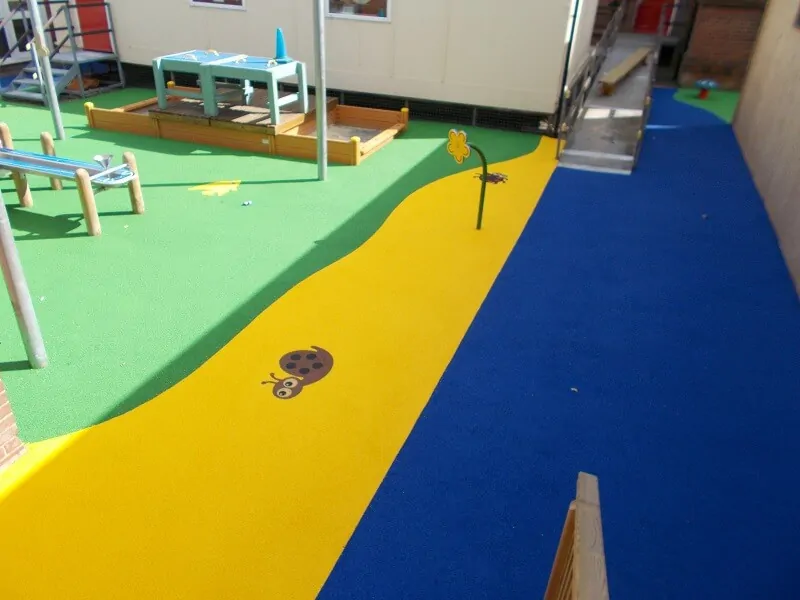
Enquire Today For A Free No Obligation Quote
We’ve all been there: we get to the playground and it looks a bit dull – the same surfacing, the same color schemes. It seems like there should be more to it, right? Well, if you’re looking for a way to give your playground more pizzazz and character, creative wetpour surfacing designs might be just the thing you need. In this blog post, we’ll explore some creative wetpour surfacing design ideas that can help make your playground attractive, fun and safe!
Wetpour surfacing can be used to create vibrant and exciting play areas with a mix of colors, shapes, and designs. Ideas include incorporating themes, curves, patterns, and textured surfaces to create unique play spaces.
Wetpour surfacing is a type of playground surfacing material made up of rubber granules and a binder, which is often epoxy or polyurethane. Wetpour is especially popular as it is both safe and comfortable for kids to play on. It also offers excellent drainage capabilities, meaning that the surface remains dry even in damp conditions. As compared to other playground surfaces such as concrete, wetpour surfacing is not only safer for children but also provides an aesthetically pleasing dimension to outdoor play areas.
The two main benefits of wetpour are that it’s more forgiving than concrete and allows for some flexibility in design elements. Unlike concrete, which can be difficult to install due to its heaviness and lack of elasticity, wetpour can be installed quickly and easily, with minimal disruption to surrounding areas. Furthermore, wetpour surfacing can be creatively designed with attractive patterns or shapes to enhance the look of a playground.
On the other hand, there are issues associated with wetpour that need to consider when deciding whether or not to install this type of surfacing. For example, wetpour materials can be expensive to purchase initially and require ongoing maintenance – such as regular raking and cleaning – in order for the surface remain safe for use. Additionally, temperatures below a certain level will cause wetpour granules to become brittle; therefore, if being used in areas where the climate dips below this temperature (below 5 degrees Celsius), alternatives should be considered.
Overall, wetpour surfacing offers undeniable advantages in terms of safety and flexibility when designing play spaces. Having discussed what is wetpour surfacing and explored the advantages vs disadvantages associated with it, the next section can now move on to discussing “Designing With Wetpour”, examining creative ways you can use this type of playground surfacing material.
Wetpour surfacing is a rubber granule and binder based material used for playgrounds that is both safe and comfortable for kids to play on, with excellent drainage capabilities. It is more flexible and easier to install than concrete, and can be designed creatively with patterns and shapes. There are some drawbacks with wetpour, such as high initial cost and ongoing maintenance requirements, as well as the fact that it can become brittle in low temperatures. Overall, it offers great advantages to playground designs.
Designing with Wetpour for playground surfaces is a great way to create beautiful and vibrant themed structures that provide a safe and comfortable playing experience. This type of playground surface has many advantages, as it is easy to install, durable, robust, and resistant to damage. It also provides drainage, can be customized with colors and shapes, and is ideal for installing on organic or uneven surfaces.
On the other hand, a wetpour installation will require more maintenance than other types of playground surfacing. The color can fade due to UV exposure, it needs to be regularly checked for sharp objects and debris, and must be recoated every 5-7 years. In addition, extreme temperatures can cause cracking or discoloration in certain climates.
When considering wetpour design options for your playground surface, keep in mind that careful planning is essential for achieving a successful result. Skimping on materials or skipping steps can lead to an unstable or unsafe playing surface. Once you are sure that all safety requirements are met and the project is properly budgeted, you can begin selecting the best colors and shapes for your dream playground design.
The next step is to explore the various color and shape options available when designing with wetpour. When chosen thoughtfully and used strategically within the overall playground design, color and shapes can help make any outdoor play area come alive!
When it comes to wetpour playground surfacing, the possibilities are endless when it comes to color and shape options. With a variety of bright, vibrant colors, you can create unique designs that capture the attention of children and provide a fun and colorful backdrop for play time. By utilizing shapes such as circles, stars, squares, triangles, and other custom-made shapes, you can further customize your design and make it great for imaginative play.
There is debate on whether or not injecting too many shapes and colors into the wetpour playground surface design could be a distraction for children during playtime or if it facilitates creative play instead. Some feel that having too much variation can be overwhelming for kids, creating too many options which can ultimately cause paralysis by analysis. Others argue that shapes and colors allow for a more stimulating environment that encourages imaginative play. Ultimately the best solution is to find a balance between the two schools of thought where there’s enough variation to encourage creativity but not overwhelm little ones in the process.
Textures and Materials offers even more ways to customize your design – perfect for creative wetpour surfacing! From gritty stone chips to soft rubberized surfaces, there are plenty of ways to make sure your design is both beautiful and safe. We’ll dive into those details next!
When it comes to creating creative wetpour surfacing designs for playgrounds, textures and materials are important components to consider. Different consistencies and finishes create unique looks that contribute to the overall feel and visual appeal of the playground.
Common materials used in wetpour designs include rubberized crumb, EPDM rubber, or polymer modified binders. These materials offer durability and cushioning to help protect children from falls, remaining intact even under high impact.
Rubberized crumb is soft, less expensive than other materials, and can be color-mixed to create patterns like swirls, stripes, rolling hills, and trails. The grains absorb water more easily which help with drainage and keeps surfaces cooler in warm weather. However, installation may require some additional care as edging needs to be done precisely to prevent gaps and cracking due to careless application of the binding material.
EPDM rubber is made up of granules mixed with polyurethane binder that has a longer life span than rubberized crumb but offers the same type of cushioning. It is also color-mixed easily and quickly so creating patterns is a breeze compared to other materials. On the downside, it can be quite costly; however, its long-term durability helps offset its expensive initial cost.
Polymer modified binders give wetpour surfaces a unique feel and look that captures attention straight away since it provides a shiny finish and creates an interesting effect. Binding this material together does take extra effort as it often involves multiple layers of mix but the final result looks spectacular nonetheless. And because of its prolonged life span, this is a good option for playgrounds that experience heavy traffic all year round and need some extra durability.
Overall, when choosing the textures and materials for your wetpour playground design it’s important to weigh up the pros and cons of each material carefully in order to find one that works best for you based on factors such as budget, location and surface traffic.
Now that we have discussed textures and materials let us look into some useful wetpour playground design ideas in the following section.
When thinking of wetpour playground design ideas, it is important to consider the different ways in which wetpour can be used for creative and interesting playscapes. Wetpour surfacing can be used in a variety of ways such as providing a colourful entranceway to a play area, attractive borders that create boundaries and separate different zones, or more intricate pathways that add a fun element to traditional playground equipment. Wetpour offers an opportunity to truly personalise the playground design, making it unique and memorable experience while still providing an action-packed and safe environment.
When considering wetpour surface designs, one important factor to remember is the possibility of wear and tear. Although wetpour surfaces are durable and require little maintenance, they must be replaced every few years due to continual wear. For this reason, some may argue that using wetpour surfaces as part of a permanent play area may not be economically viable in the long term. However, when installed correctly, wetpour can actually provide excellent long-term value with minimal maintenance and greater durability than other groundcover materials available. In addition, there are also many options for incorporating wetpour into more temporary play area designs that will still offer plenty of exciting experiences for children.
When creating your wetpour design for your playground, it is important to consider the overall theme and purpose of the space you are creating. Wetpour surfaces can be used to create exciting interactive areas that promote imaginative play or more structured opportunities for physical challenge. Whatever you decide on, make sure it’s designed with safety in mind so all users can enjoy the wetpour play experience responsibly.
For those looking for even more creative ideas for their wetpour surface designs, the next section presents many other wetpour surfacing design ideas to help bring your playground vision to life.
When it comes to creative wetpour surfacing design ideas for playgrounds, there are many different options available. Whether one is looking for a playful theme with bright colors and shapes or something more subdued and natural, the possibilities are endless. From water features to geometric designs, textured surfaces and more, wetpour surface designs can enhance the overall look and feel of any landscape while providing a safe and comfortable place to play.
One unique design idea that should be considered is the use of inlaid stones or pavers to create a colorful background for play areas. This type of design could include a meandering path for children to explore or create a whimsical border around an area of interest. The addition of a patterned stone or paver can bring life to any boring surface, making it seem as though it was handcrafted from nature’s elements.
Another idea is to add small mosaic tiles to existing wetpour designs for added visual stimulation. These can be placed throughout the surface to create pathways, borders, or art pieces that can engage children and adults alike. The possibilities are virtually limitless when it comes to combining colors and textures to create interesting and meaningful designs.
In addition, using specialized paints and sealers on top of existing wetpour surfaces can produce beautiful and durable artwork that will stand up to weathering over time. Drawing inspiration from nature-based themes such as waves, plants, animals, scenery, or wildlife can provide unparalleled depth and detail to any wetpour site design.
When it comes to creating appealing wetpour surfacing features for playgrounds, there is no shortage of ideas that can be explored. With the right materials and execution, these designs often become timeless works of art that will last for years to come.
Leading into the next section about: “Benefits of Wetpour Surfacing Design Ideas”, it is important to consider not only the aesthetic value of wetpour design but also its health benefits as well. In order for these designs to truly flourish in an outdoor setting, their safety must always take precedence over their aesthetic appeal.
Wetpour Surfacing Design Ideas provide many benefits for playgrounds. It is a soft yet durable surface and can help to reduce the risk of injuries from falls onto hard surfaces such as asphalt or concrete. It is much easier to maintain than these other types of surfaces, and long-term care requires only occasional repairs and regular power washing. Wetpour surfacing also allows creative design possibilities, so children can benefit from play activities designed specifically to foster their exploration and development.
Wetpour’s soft material provides cushion and shock absorption, creating a safer environment for recreational use, which cannot be as easily achieved with hard surfaces like asphalt or concrete. Its flexibility also allows it to conform to different shapes, adding an element of fun to play areas, allowing for creative designs with texture and colour that can engage kids in more interactive activities.
However, the main disadvantage of wetpour surfacing is the potential for accelerated wear during periods of extreme weather conditions. In addition, wetpour installation costs can be high due to its complexity when compared to other types of surfacing materials.
In conclusion, there are both advantages and disadvantages associated with using wetpour surfacing design ideas for your playground; however, the advantages far outweigh the drawbacks when it comes to making playgrounds safe and fun places for children. With careful maintenance and selection of appropriate designs, wetpour can provide years of enjoyable playtime experiences while protecting children from potential harm in the process. The next section will provide insight into how to effectively conclude your wetpour project in order to get optimal longevity, safety and functionality from your new playground surface.
The use of creative wetpour surfacing design ideas for a playground can be an effective way to create a fun and vibrant environment for both children and adults. By incorporating bright colors, interesting shapes, and unique features, playgrounds can be transformed into an exciting outdoor destination. There are many factors to consider when creating a wetpour surfacing design that works for the environment, including safety, maintenance requirements, and aesthetic appeal.
For those who wish to pursue this type of surfacing for their playground, it is important to understand the potential risks associated with wetpour surfacing. It is necessary to ensure proper installation and maintenance to reduce the likelihood of accidents or injuries. Furthermore, due to its lower density than other materials like asphalt or rubber, wetpour surfaces could be more vulnerable and prone to damage over time. If not properly taken care of and serviced regularly, it could become hazardous to those who use the playground often.
On the other hand, there are many advantages that come with using wetpour surfacing in playground designs. It is relatively low cost compared to other types of materials and gives off a soft texture that is perfect for protecting against falls and slips. Additionally, wetpour offer an unlimited number of creative options since it can be poured into virtually any shape or size. With careful consideration of all relevant factors, wetpour surfacing may be the perfect choice for anyone looking to upgrade their play area.
Yes, there are several environmental benefits of wetpour surfacing. By creating a permeable playground surface, water can drain directly into the ground instead of running off into other nearby areas and potentially damaging wildlife habitats or causing soil erosion. In addition, wetpour surfacing can help regulate temperature on the playground since it absorbs more heat than other materials such as asphalt. This can help reduce the use of energy-intensive coolers since the playground won’t get so hot in the summer months. Furthermore, wetpour surfaces are made from recycled materials, making them an environmentally friendly choice.
The advantages of wetpour surfacing are numerous. Firstly, it is a very durable surface, capable of lasting for many years before needing to be replaced or repaired. Secondly, it is an excellent shock absorbent material, making it ideal for playgrounds and other areas where children may be playing and running around. Wetpour is also a non-slip surface, reducing the chances of accidental in jury due to slipping. It is also compliant with industry regulations and standards, providing peace of mind that your playground will be safe and secure for use. Overall, wetpour surfacing has proven to be an ideal choice for playgrounds and outdoor spaces, providing children with a safe and aesthetically pleasing environment to explore and play in.
Wetpour surfacing is a type of surfacing that is suitable for both indoor and outdoor playgrounds. It is made from two key ingredients; a flexible rubber binder which provides the structure to the surface and a combination of rubber granules, coloured chips and/or stones which form the decorative surfacing layer.
The rubber binder component works well in wetpour surfacing systems as it absorbs impact, creating a soft and slip-resistant surface that cushions falls. The other ingredients add durability to the system and can also bring colour and design elements. Wetpour surfacing is extremely versatile as these ingredients can be combined to create a multitude of different designs, themes, shapes and sizes.
In summary, wetpour surfacing is an ideal solution for play area surfaces and consists of a combination of rubber binder and granules, coloured chips or stones. These materials have been carefully chosen to give durability, cushioning, colour and improved safety while retaining the flexibility to create exciting designs.
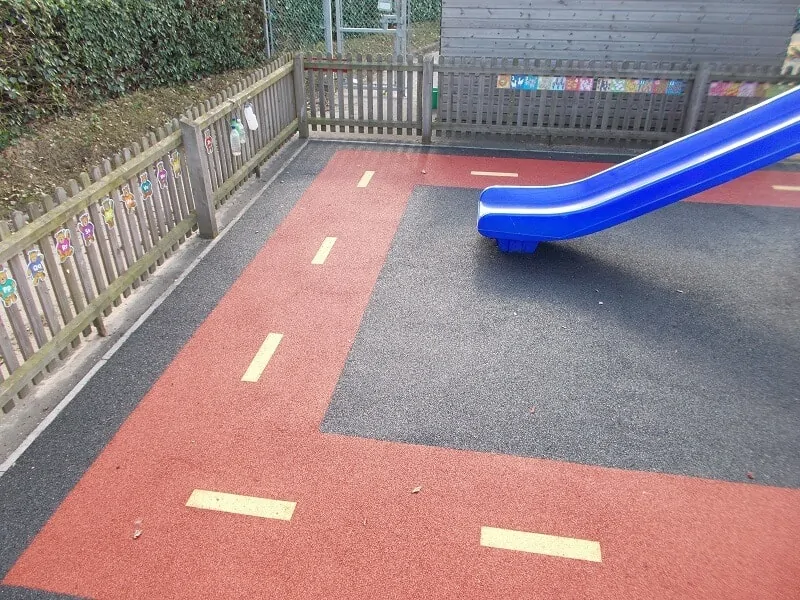
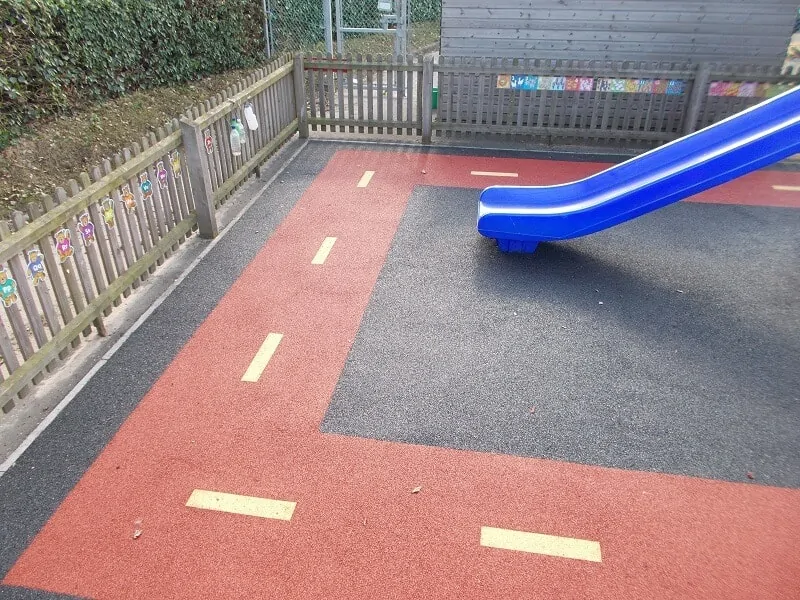

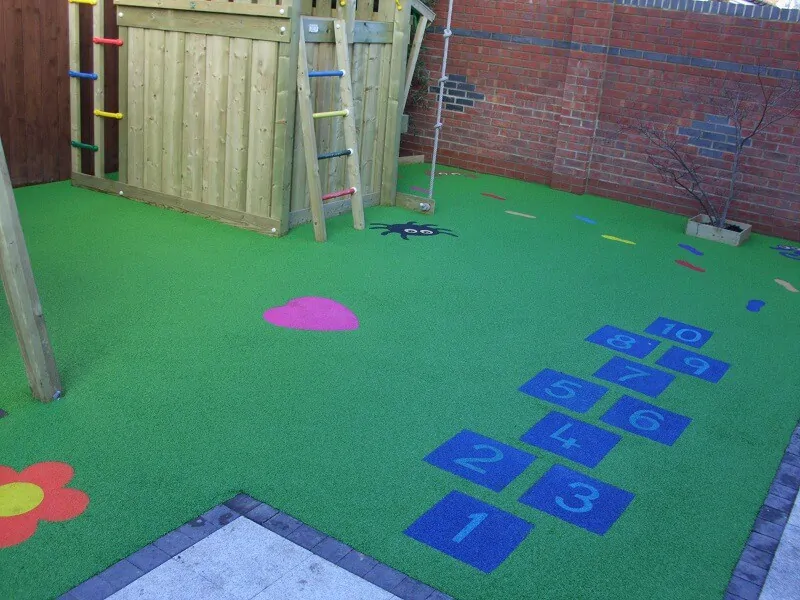
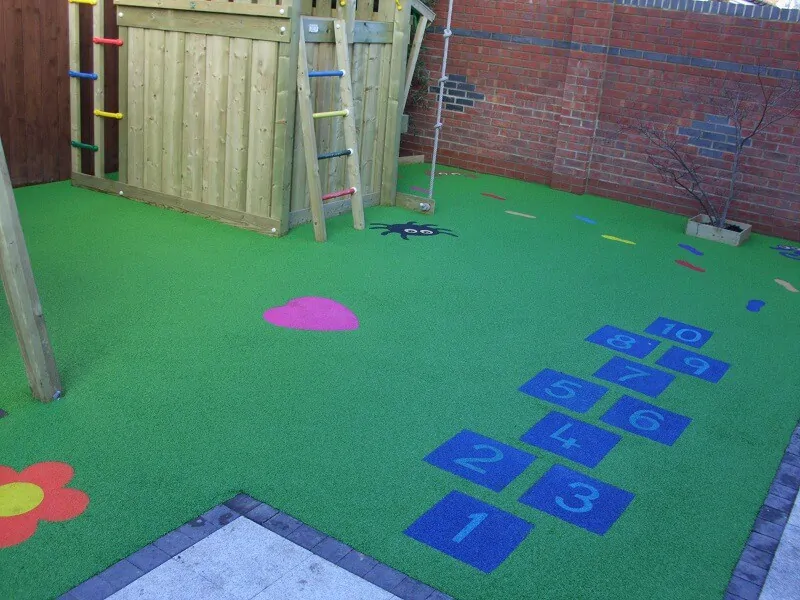
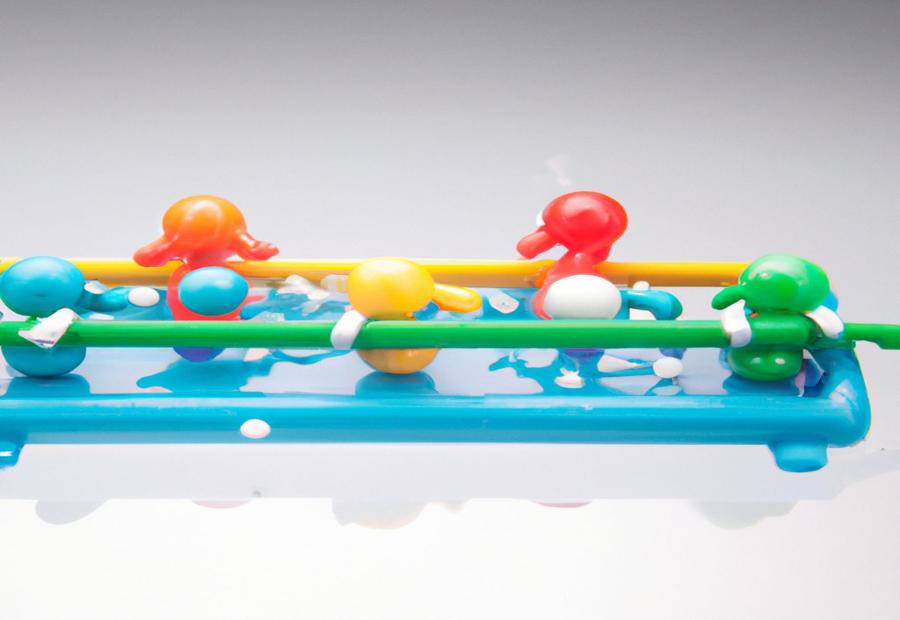
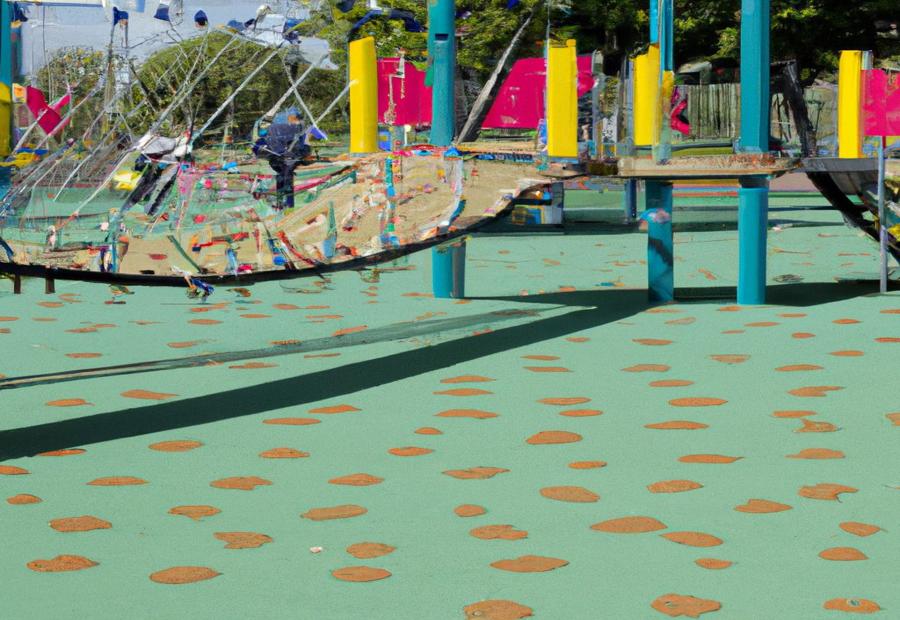
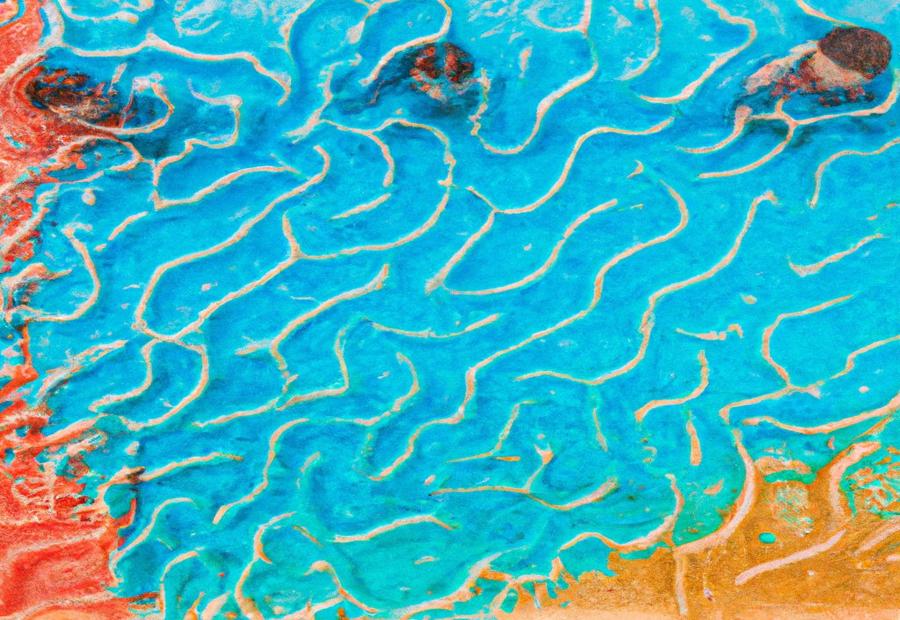
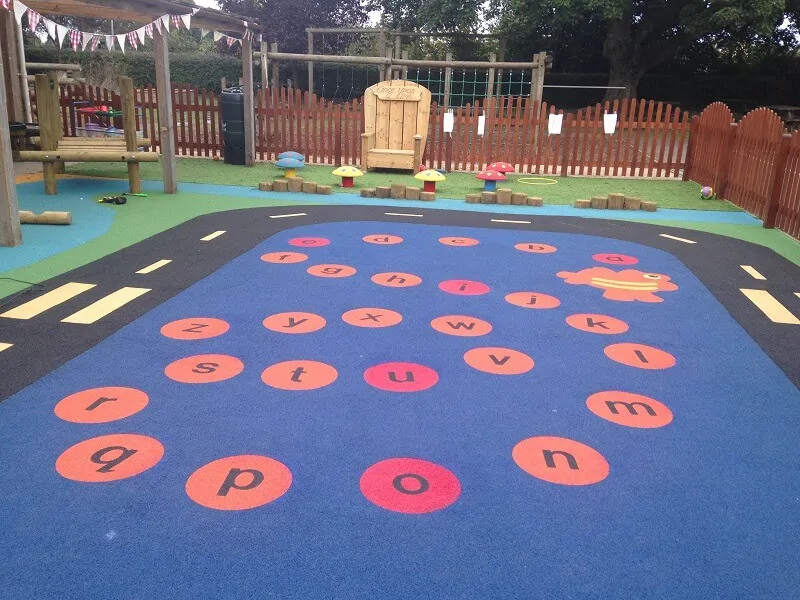
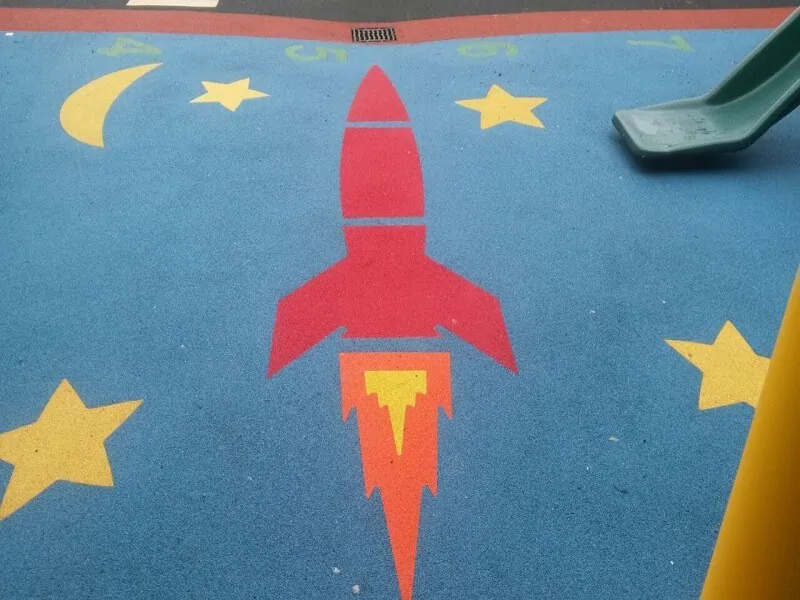
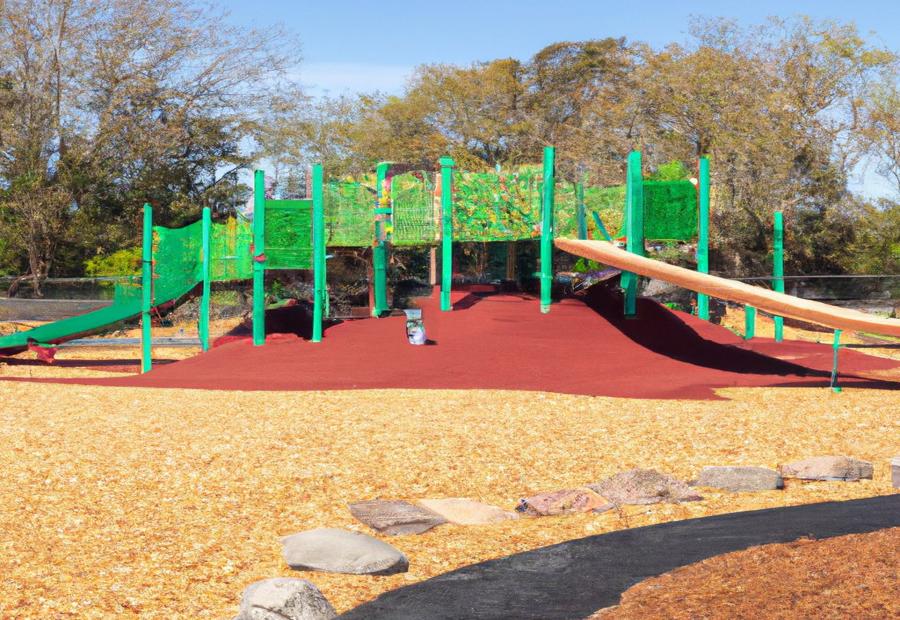
We Aim To Reply To All Enquiries With-in 24-Hours